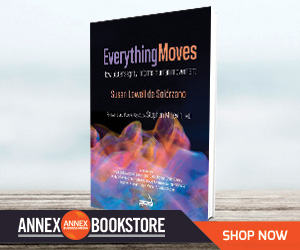| |
| |
| |
 |
|
@{mv_date_MMM d, yyyy}@ |
|
| |
» Take the survey...
» Read more...
» Read more...
» Take survey
|
| |
|
| |

The emerging science of biotensegrity provides a fresh context for re-thinking our understanding of human movement, but its complexities can be formidable. Bodywork and movement professionals looking for an accessible and relevant guide to the concept and application of biotensegrity need look no further than Everything Moves: How biotensegrity informs human movement.
In order to work with our own bodies and the bodies of our students and clients and teams most effectively, we need to understand the nature of our human structure. Susan offers the enquiring bodyworker or movement professional, who wants to take their understanding of how to apply biotensegrity in their work to the next level, a practical and relatable guide to the biotensegral nature of our bodies, in which all of the parts are one, yet all are constantly changing.
» Shop Now |
| |
|
| |
 Trauma-informed care (TIC) means ensuring safe therapeutic environments, building trusting therapeutic relationships and enabling individuals living with the effects of trauma to establish successful coping strategies for resilience.(1) TIC has been embraced by many health care professions, but its implications have not been clearly defined for massage therapy. Nevertheless, most RMTs endeavour to ask questions safely, without worsening how a patient feels. They naturally extend empathy and compassion. These skills might be described as hallmarks of trauma-informed massage therapy, and yet they have not been widely investigated in massage therapy research. In this article, the primary aim is to discuss the role of empathy in offering TIC.
» Learn More
Trauma-informed care (TIC) means ensuring safe therapeutic environments, building trusting therapeutic relationships and enabling individuals living with the effects of trauma to establish successful coping strategies for resilience.(1) TIC has been embraced by many health care professions, but its implications have not been clearly defined for massage therapy. Nevertheless, most RMTs endeavour to ask questions safely, without worsening how a patient feels. They naturally extend empathy and compassion. These skills might be described as hallmarks of trauma-informed massage therapy, and yet they have not been widely investigated in massage therapy research. In this article, the primary aim is to discuss the role of empathy in offering TIC.
» Learn More |
| |
|
| |
Are massage therapists properly equipped, in their training and informed by evidence, to respond appropriately to patient affect, particularly in advanced care situations?
» Listen now
|
|
How does the Code of Ethics frame Scope of Practice in assisting the practitioner in complicated decision making? How do we build a “working alliance” with clients? What is a “touch-triggered” response? How can we effectively set boundaries? This and more as we consider all that happens in the therapeutic encounter.
» Listen now
| | |
|
| |
|
|
| |
| |


